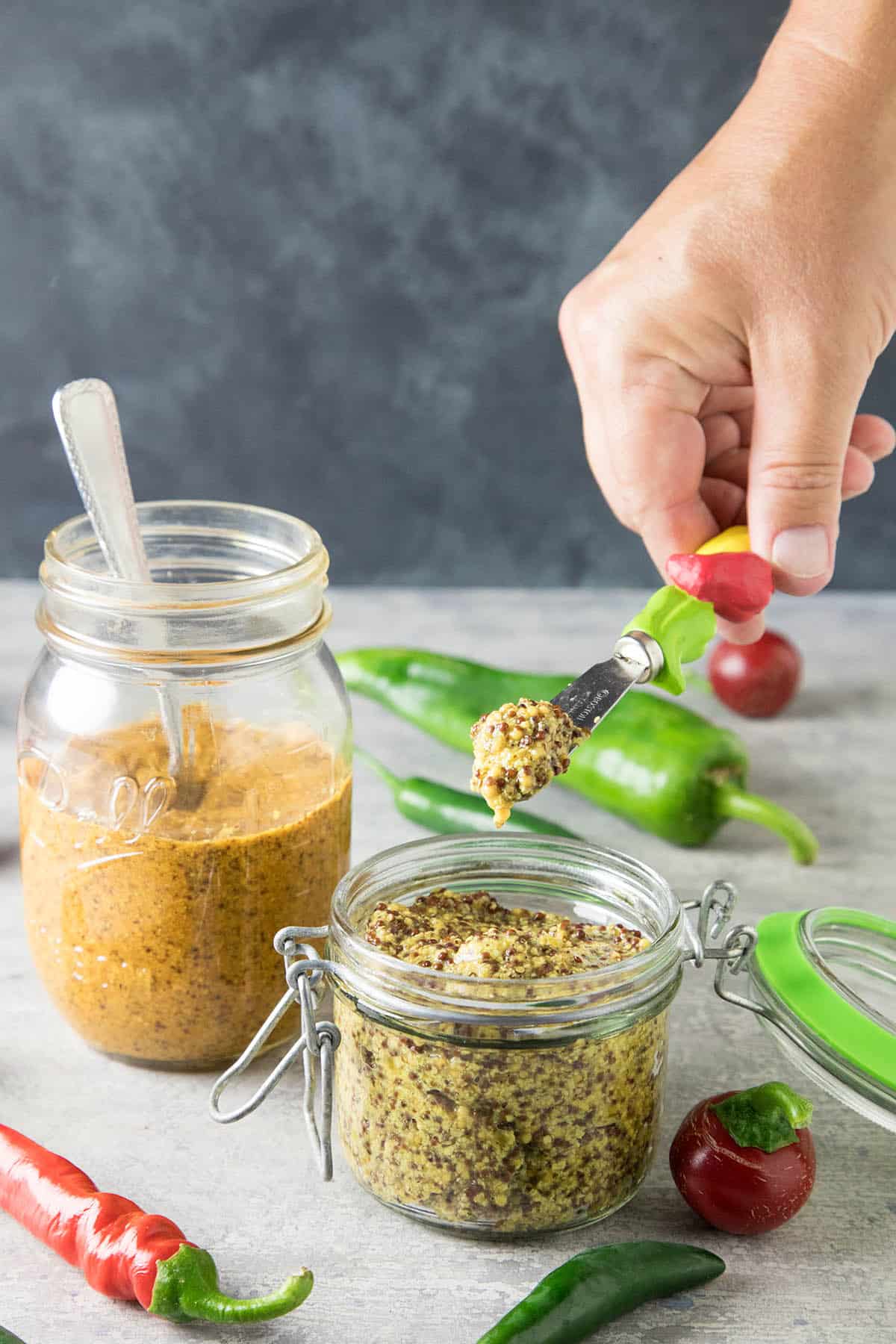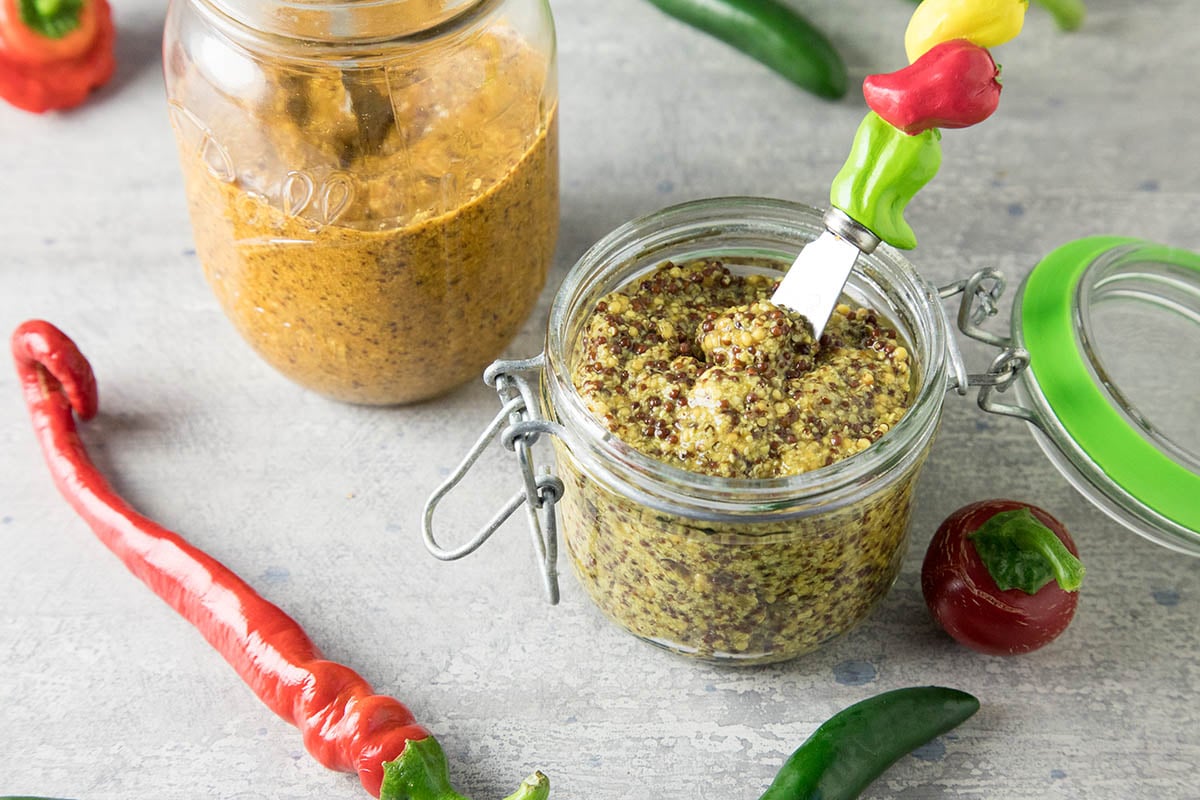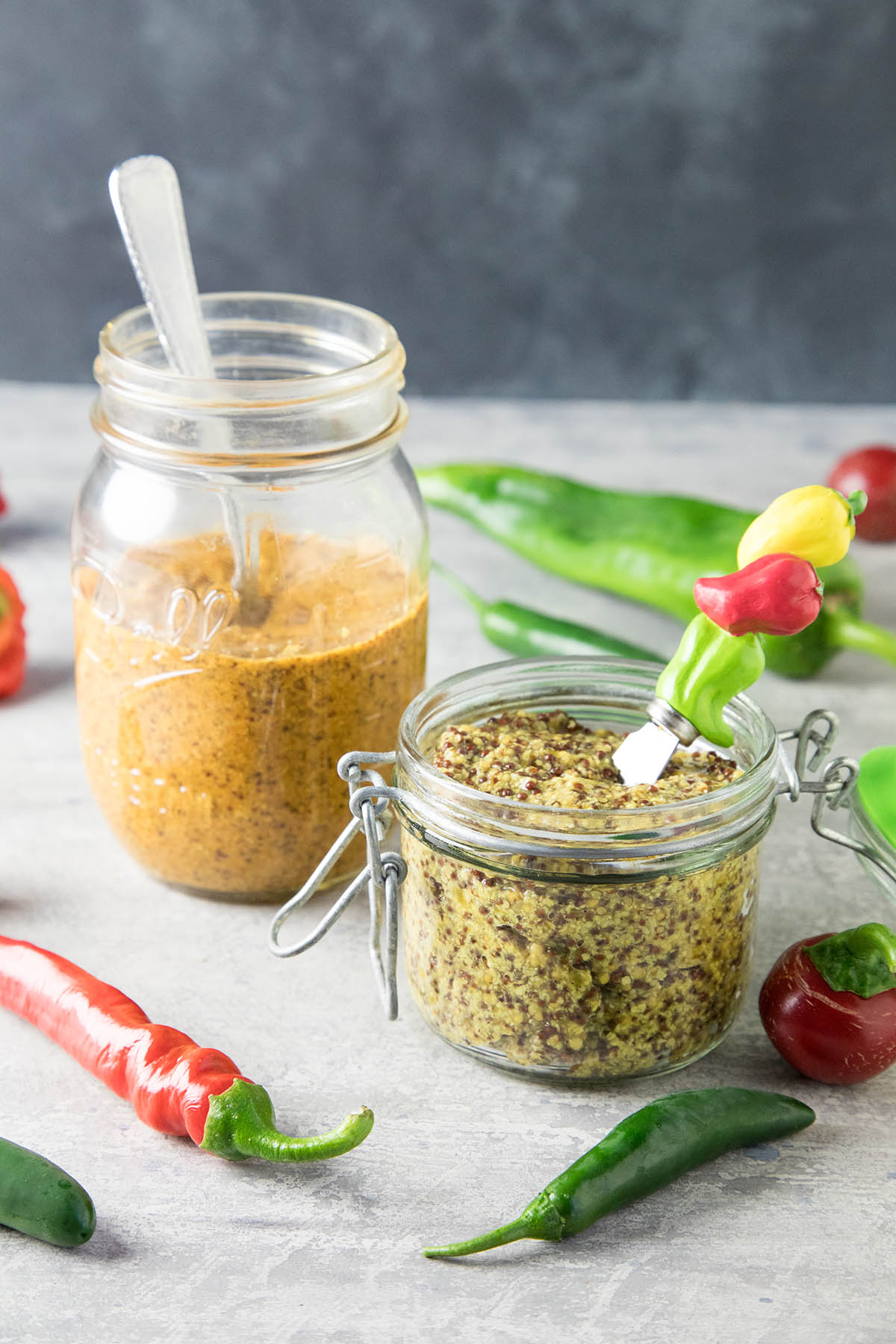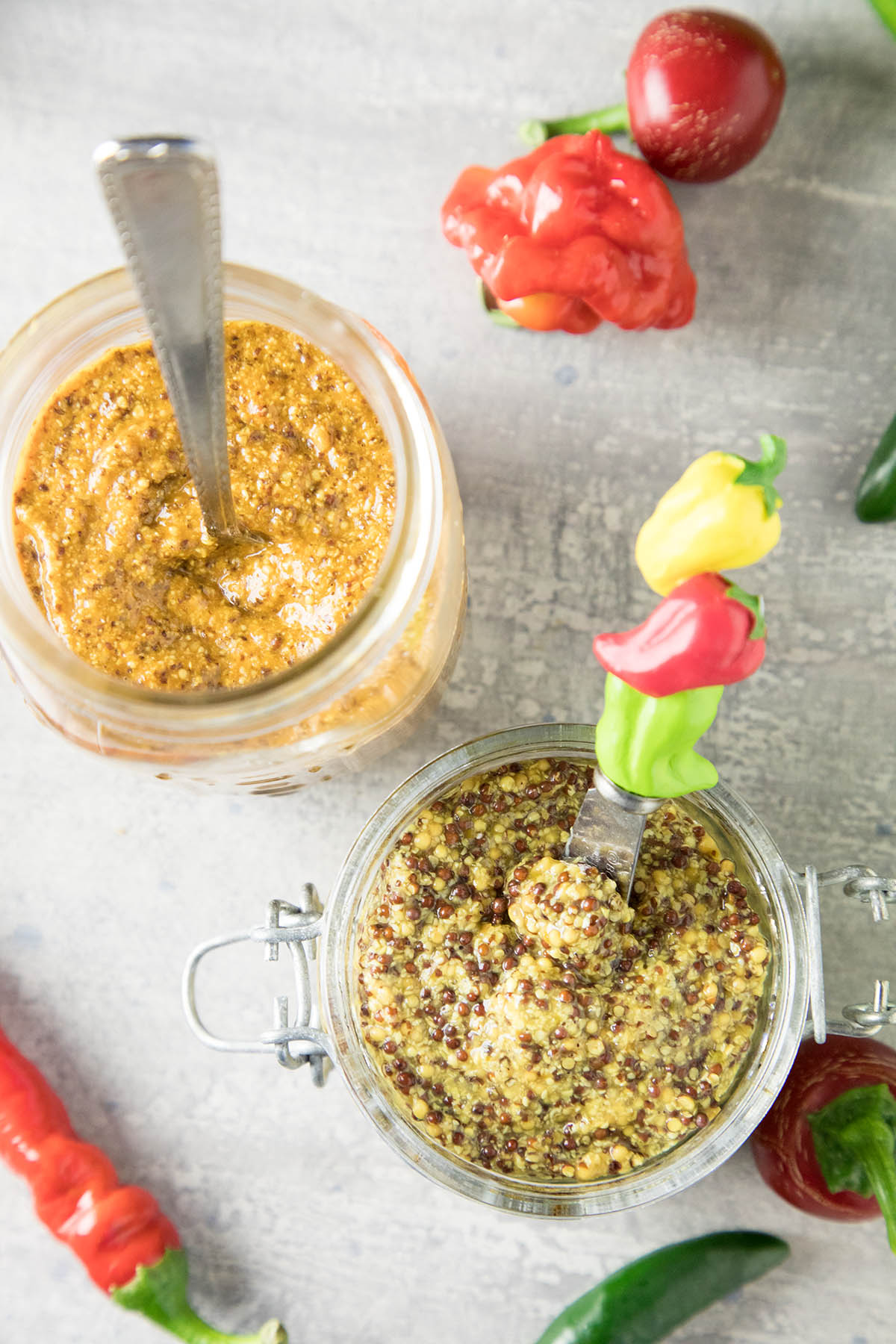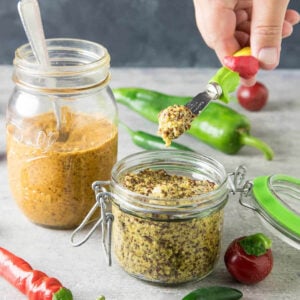Got any questions? Ask away! I’m happy to help. If you enjoy this recipe, I hope you’ll leave a comment with some STARS. Also, please share it on social media. Don’t forget to tag us at #ChiliPepperMadness. I’ll be sure to share! Thanks! — Mike H.
The Origins of Mustard
Mustard has been around for millennia. The ancient Romans loved the stuff, and the name “mustard” originates from one of their original preparation methods of mixing unfermented grape juice, or “must”, with mustard seeds to create “burning must”, or “mustum ardens”. “Must-ard” it is thus named, and here we are today, enjoying it in so many creative and flavorful ways. There are discussions of how mustard was originally enjoyed and its typical uses, but I find those irrelevant to making mustard, as I personally enjoy mustard for a huge variety of uses, from using it as a simple spread for sandwiches or hot dogs to making rubs for the barbecue to using it as an ingredient in homemade sauces and so much more. Armed with the ability to make your own mustard, you are now free to incorporate all sorts of your preferred ingredients to please your taste buds. For me, this typically includes some type of chili pepper for obvious reasons, but I also enjoy sweeter elements mixed with pungent flavors and herbs. My wife, Patty, prefers her mustards on the pungent side and not quite as hot. She loves dijon mustard. This is not a problem as I can easily make a base mustard, divide it in half, then season each half differently for our divided preferences. So, are you ready to make some mustard?
Yellow (or White) Mustard Seeds: These are the most widely available and most popular. Brown Mustard Seeds: These are more pungent that yellow mustard seeds and are quickly gaining popularity. Black Mustard Seeds: These are more popular in Indian, Asian and Middle Eastern cooking, though they are also gaining popularity in the U.S. They are also quite pungent and personally recommended.
Another basic recipe for making smoother mustard is to grind mustard seeds into a flour, then mix it with a liquid until you achieve the consistency you prefer. NOTE: When letting the mixture soak overnight, you can leave it out on your counter top or set it in your pantry. Do not refrigerate it, or the absorption process may not work. One reader did this and her mustard would not mix. These are just the basics, and as you’ve probably already figured, there are certain variables which allow you to make a nearly infinite variety of mustards. They are:
Mustard Seeds vs. Mustard Powder
Starting with mustard seeds will result in a grainier mustard. After the initial soaking, you can serve the mustard as is, with plump, heavy grains, or process it to your preference of smoothness. You will still have some whole seeds most likely, even with lots of processing. Using mustard powder will result in a very smooth mustard, more akin to the yellow stuff you find in store bought squeeze bottles. You can always grind mustard seeds with a mortar and pestle or a spice grinder to make powder. Of course you can include a mixture of liquids as well with your own preferred ratios. If you prefer a strong, pungent mustard, use cold liquid. Room temperature liquid is commonly used. If you love the taste of it, consider adding it to a mustard. The addition of salt and vinegar will help keep your mustard longer if you’re using many ingredients. I almost always use vinegar and a bit of salt, though for me, it’s mostly about the flavor with those ingredients. Ingredients
1 cup mustard seeds (yellow, brown, and/or black) 2 cups liquid of choice Extra ingredients/flavorings – amounts are variable
If you prefer to not refrigerate your mustard, keep it in a cool, dark place, like the cupboard. One way to help reduce bitterness is to soak the mustard seeds before you start in a bit of water and let sit overnight, or at least rinse them very thoroughly to remove bitter elements. Refrigeration is a best practice.
Roasted Hatch Chile-Beer Mustard - Recipe Homemade Whole Grain Spicy Beer Mustard Homemade Habanero Mustard Beer-Honey Mustard Recipe How to Make Yellow Mustard Pickled Mustard Seeds
Yellow Mustard Seeds Brown Mustard Seeds Black Mustard Seeds Mustard Powder
Let me know how your mustard turns out! Send pics! Enjoy!
